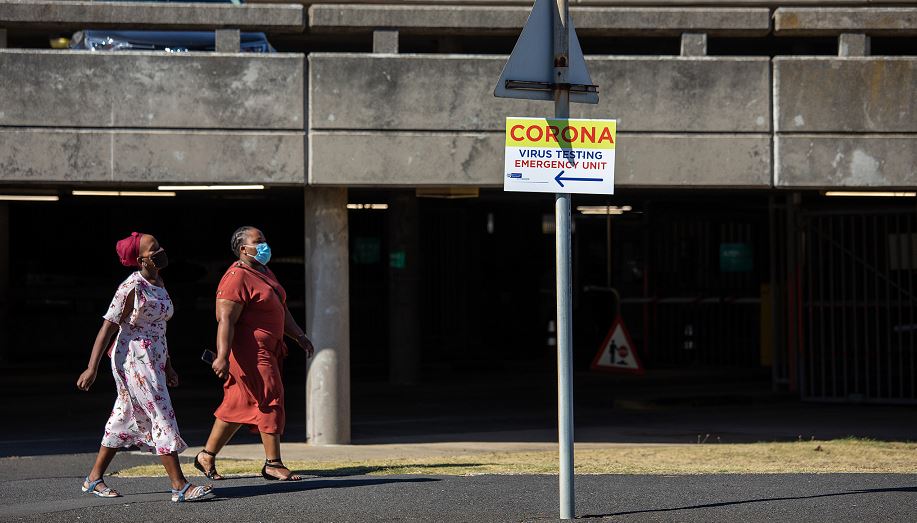
Editor's note: Djoomart Otorbaev is the former prime minister of the Kyrgyz Republic, non-resident senior fellow of Chongyang Institute for Financial Studies, Renmin University of China, and a member of the Nizami Ganjavi International Center. The article reflects the author's views, and not necessarily those of CGTN.
Judging by recent events, a solution to two related global problems facing humanity will soon be proposed. It is about solving the problems of low-income countries' debts to their creditors and involving those countries in the fight against climate change at the same time.
On April 8, at the spring meetings of the International Monetary Fund (IMF) and the World Bank, IMF Managing Director Kristalina Georgieva said that now it is the right time to deal with both challenges. "When we are faced with this dual crisis – the debt pressures on countries and the climate crisis, to which many low-income countries are highly, highly vulnerable – it makes sense to seek this unity of purpose," she said. While there is no timeline yet for announcing concrete measures, all parties involved are pointing toward the COP26 climate summit in November in the Scottish city of Glasgow.
Even before the pandemic began, total debt reached a record $253 trillion, equivalent to 322 percent of global GDP. The IMF and World Bank have issued warnings about unacceptable debt accumulation, which puts 50 percent of the world's poorest countries at high risk of a debt crisis. Even in 2019, more than 60 countries spent more on debt services than on healthcare. These high levels of debt could lead to an increase in defaults of about $480 billion.
Due to the COVID-19 pandemic, the sovereign debt of low-income countries has grown dramatically. All of this is putting massive pressure on their economies, limiting the ability of their budgets to finance health and education spending, and causing a sharp decline in economic activity. The IMF recently issued a warning that sovereign debt levels have surpassed historically highest levels. And while this problem is not limited to low-income countries, those countries will be hit the hardest. In November last year, Zambia became the sixth country to default on its sovereign bonds this year (following Argentina, Belize, Ecuador, Lebanon, and Suriname).
Thus, the low-income countries face a double crisis: they must pay off their debts and face serious environmental problems. Restructuring even a few percent of that debt could free up tens of billions of U.S. dollars to fight climate change in low-income countries.
As it is known, in April 2020, the G20 finance ministers, in response to the outbreak of the COVID-19 pandemic, decided to suspend the payment of debts of low-income countries. Such countries have received opportunities to finance their health programs. In addition, they began to think about options for more durable solutions that can provide an acceptable level of sovereign debt and its servicing.
The history of exchanging the sovereign debts of debtor countries for the protection of nature is not new. Interestingly, the first debt-for-nature swap deal was initiated by non-governmental environmental groups in 1987; their goal was to preserve the rapidly disappearing rainforests in Latin America.

A coronavirus testing unit sign outside Groote Schuur hospital in Cape Town, South Africa, January 11, 2021. /Getty
A coronavirus testing unit sign outside Groote Schuur hospital in Cape Town, South Africa, January 11, 2021. /Getty
The first deal took place in Bolivia, where Conservation International bought a $650,000 Bolivian debt to Citicorp for $100,000 to protect the Beni Biosphere Reserve. Similar debt swaps the same year were executed in Ecuador and Costa Rica. Soon after, such agreements began to apply in various humanitarian areas, such as assistance to children, education, healthcare, nature conservation, environmental protection, etc. Since 1990, Paris Club lenders have also included debt swap clauses in their agreements with borrowers, allowing the same arrangement to be applied to the bilateral debt restructuring.
Various institutions applied debt swaps for sustainable development in over 30 countries, mainly in Latin America and the Caribbean.
In connection with the new crises, the idea of simultaneously solving the problems of the economic and climatic crises has received a second wind. Traditionally, these instruments represent the exchange of an existing debt contract for a new one, with the previous contract usually being written off or discounted. Usually, this action is associated with particular investment conditions agreed by both the creditor and the debtor.
It should be emphasized that debt swaps for sustainable development are not debt cancellations that do not provide material or moral benefits to creditors. In this case, creditors, firstly, receive back part of the original debt; secondly, debtors get the opportunity to convert their debt obligations into domestic environmental projects; and thirdly, we improve the ecological situation in the borrowing countries.
Achieving these goals will require the professional work of economists, financiers, and environmentalists. After all, the future restructuring model will probably have a global character and will involve significant human and financial resources from many countries. But above all, it will require political will from both donors and borrowers. The world community needs to unite to succeed in this complex but critical process.
(If you want to contribute and have specific expertise, please contact us at opinions@cgtn.com.)

